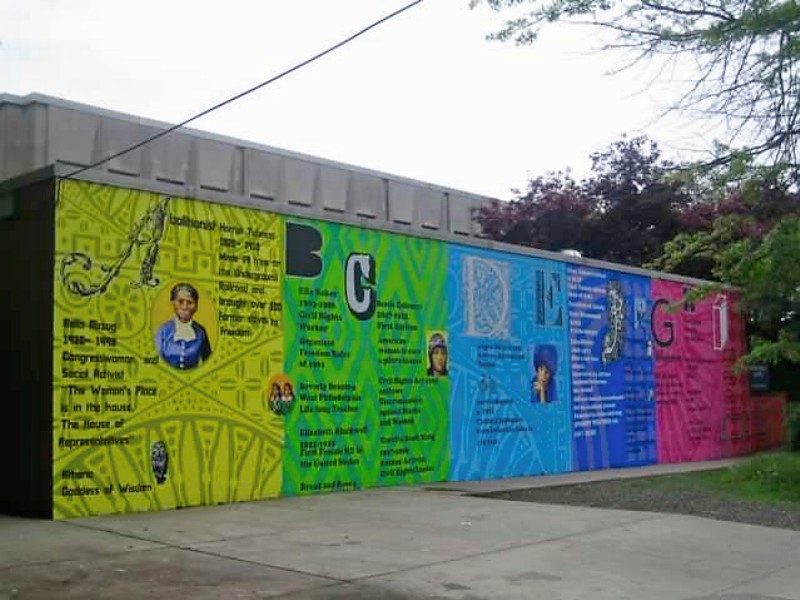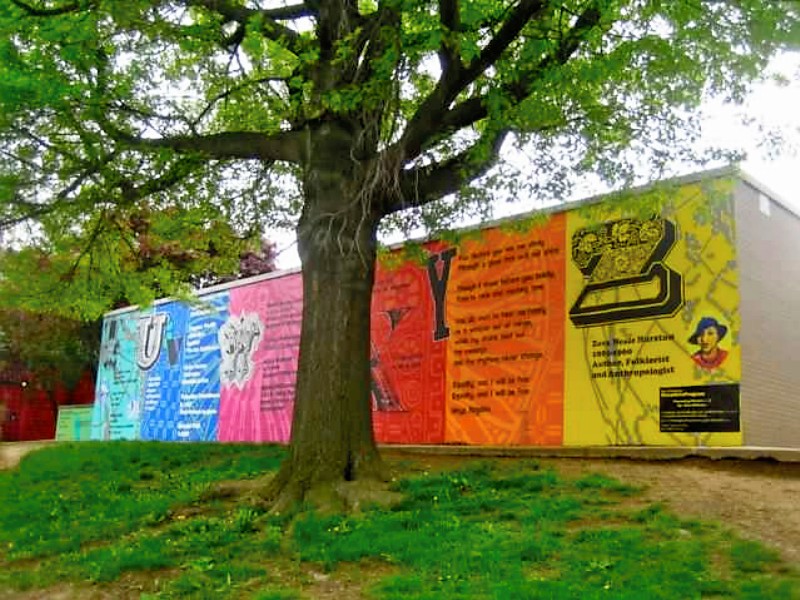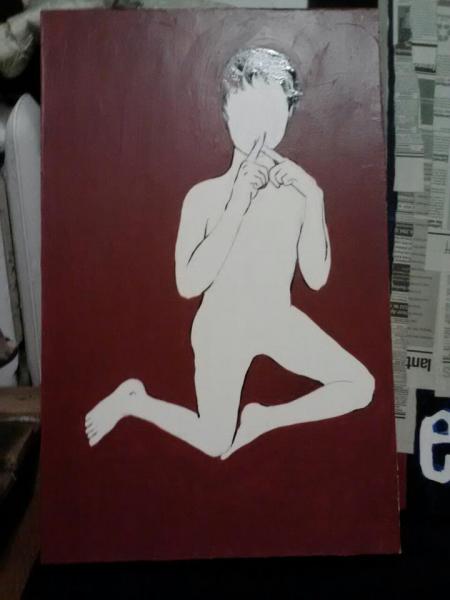Serendip is an independent site partnering with faculty at multiple colleges and universities around the world. Happy exploring!
Walled Women



POST YOUR THOUGHTS HERE
Welcome to the on-line conversation for Women in Walled Communities, a cluster of three courses in a new 360° @ Bryn Mawr College that focuses on the constraints and agency of individual actors in the institutional settings of women's colleges and prisons.
This is an interestingly different kind of place for writing, and may take some getting used to. The first thing to keep in mind is that it's not a site for "formal writing" or "finished thoughts." It's a place for thoughts-in-progress, for what you're thinking (whether you know it or not) on your way to what you think next. Imagine that you're just talking to some people you've met. This is a "conversation" place, a place to find out what you're thinking yourself, and what other people are thinking. The idea here is that your "thoughts in progress" can help others with their thinking, and theirs can help you with yours.
Who are you writing for? Primarily for yourself, and for others in our cluster. But also for the world. This is a "public" forum, so people anywhere on the web might look in. You're writing for yourself, for others in the class, AND for others you might or might not know. So, your thoughts in progress can contribute to the thoughts in progress of LOTS of people. The web is giving increasing reality to the idea that there can actually evolve a world community, and you're part of helping to bring that about. We're glad to have you along, and hope you come to both enjoy and value our shared explorations. Feel free to comment on any post below, or to POST YOUR THOUGHTS HERE.

silence and understanding
I made a video for my third web event: http://www.youtube.com/watch?v=bN0L1_vP85Q

What Can A Body Do?
With Christine Sun Kim’s visit to our class, her silly but thoughtful activity, and our visit to the “What Can a Body Do?” exhibit at Haverford, the idea of silence and sound in respect to members of the Deaf community, ASL and those that can hear have continuously popped into my head. I have always found myself intrigued by signing and how beautifully it flows and how much can be said in simple signs. Along with signing come the facial expressions that make up most of the grammar in ASL and the sounds made during conversation. But when it comes to those that hear, silence is often something we fear; a part of our life that we choose to push away but crave at other moments. Ideas of sound and silence are both topics that link themselves with her visit and our class as a whole.
Being able to experience Kim’s art first hand and welcoming her into our classroom, I couldn’t help but feel like connecting it all to our class’ conversations about silence or our approaches to silence. I feel like they are similar journeys. Not to say that our journey is anything compared to hers but that we have also been struggling to figure out where we belong in an environment filled with silence and what that means for us as a whole class and individually. As Kim said to us and as it says in the “What Can A Body Do?” gallery pamphlet, her art is her own way of taking “ownership” of sound. As we have been constantly discussing, silence is an element that we may have not directly considered or consciously considered.

Silence: All in the Family
I would like to further explore how I understand silence as a first generation Cambodian-American within the Cambodian community as well as within my own family. In the previous web event paper I wrote about how stifling it was to live in a household dictated by my father. What I struggled to come to terms with was the unexpected guilt that I felt after I realized that my choice to speak out against him may have silenced him. But what I want to explore in this web event paper is how silence is exemplified when I am with my grandparents and any other Khmer speaking person who isn’t intent on purposefully silencing me.
Christine Sun Kim: Silence as Discipline and Mediated Viewings of Art
Christine Sun Kim: Silence as Discipline and Mediated Viewings of Art
“Hold your tongue”. “Use your inside voice”. “Don’t talk back”. These common phrases all refer to controlling your silence/voice as a way of demonstrating control and discipline. From a young age, children are taught rules of silence and quietness at home and at school, to varying degrees given that culture of their environment. Many of my classmates have talked about being silence in their homes growing up as a sign of respect. But what does it mean when a deaf person is expected to control their voice or to be aware of the noises they make? Christine Sun Kim, who was born deaf was still expected to lives within the conventional norms of sound. She states, as a child, “They would tell me: be quiet. Don’t burp, drag your feet, make loud noises. I learned to be respectful of their sound.” (Selby) This experience led Kim to question what it meant to have control over sound and explore this through the avenue of art.

Frustration with the word....
In our class journey, we have recognized, outlined, and named several different types of silence. Our daily silent practices display this especially. We’ve been led through guided meditations, during which the conflicting dialogues in our minds cleared but the room was still full of Anne’s voice. We watched a silent pianist for 4 minutes, who aimed to prove that there is no silence, as the world consists of layers of sound, many of which we can only hear when we’re both quiet and listening. We had one class during which we were mindful, placing all of our attention in our feet, and we walked around without speaking or communicating in any form with others. Sarina led an exercise which was about communicating silently, with our bodies, in an action game. I led a blind contour drawing exercise. We’ve made collaboratively written short stories and engaged in soundless free-writes on our assumptions and what has been unspoken between us.
Most of the exercise facilitators have taken the “silence” requirement to mean the absence of sound. This brings me back to the first question I wrote about in this class – which was inspired by the image of the empty library; I wondered if a library is silent, or a book. Although it has the capacity to be a noiseless space, it is full of symbols and dormant meaning -- meaning that must be read to be heard.


Hybrid Identities; Silenced Selves
Hybrid Identities; Silenced Selves
Growing up in a country that was not my own, as I tried to adopt behaviors in order to fit in socially in school and in college, I often felt as though I was abandoning traits that were essential to who I was. In her memoir, Rigoberta Menchú talks about being a Quiché woman but not representing all factors of that identity as a result of having learned Spanish. John Edgar Wideman echoed similar sentiments in saying that the higher he moved on the social ladder, the more alienated he felt from his home, family and more specifically his brother. What is the price that those from marginalized groups must pay when attempting to achieve social mobility by adapting to the dominant culture? Which aspects of their culture and identity are silenced as they choose to highlight or give voice to other versions of the self? How are these people viewed not only by the dominant culture but also by their home culture? I often fear being called a traitor by my family and I hide my accomplishments from them to avoid being seen as “the other.” In comparing the experiences of Rigoberta Mechú and John Edgar Wideman to my own, is it worth the risk to loose a part of the self in order to help our communities and ourselves?

Silence: Upholding the Norms of our Society (Web Event III)
“[S]ound… carries a lot of social status and/or currency.” (Kim 1)
Sound as social currency. When I think about this term, I immediately think of sound as a physical form that can be used in exchange for something else. What exactly can I buy with sound? Can I buy silence? Power? Status? In what ways must I use sound to obtain these ‘products?’…what do I do with them once they are mine? I am having trouble understanding sound as social currency. Although, I understand what I can buy, at least I think I do, I am not exactly sure how sound can be used to actually buy something. It could be that I am taking the term too literally; but, as someone who possesses and has mastered sound, there is no denying that I use sound as social currency to navigate, negotiate and understand the world around me.
As mentioned in my first two web events, in my cultural background, sound and silence represented the power dynamics within my culture and home. More specifically, sound was used as a “form of authority” (Sun 1). When my parents spoke firm, unwavering, one-syllable sounds, I knew my place as a young person. I also knew that my silence, although enforced on me, was a sign of respect and my expected role. I had learned early on that sound shaped the cultural norms in my household, while my silence, and that of my siblings, upheld them.

Art?
ABOUT THE CHARACTERS
Drake is a single father who owns a bodega near by his home. He has an 18 year-old daughter, Nikki, who considers herself to be an artist – a street artist to be more specific. Although Nikki spends hours drawing, painting and sketching in her room, she also goes out late at night with a group of friends to perform street art. Drake already sees art as just a hobby rather than something that can be turned into a good career, nevertheless does he condemn street art and finds it to be “dirty” and a problem for the city. Although Drake is aware that his daughter loves art, he is not aware that she performs street art; he just thinks that she does murals in schools, and paints for fun and because it is her passion.
SCENE 1
On a Friday night, Nikki gets into a huge argument with her father over her boyfriend (which her father disapproves of). After the argument, Nikki decided she wanted to rebel so she went to her fathers store and painted one of her signature design.
It is Saturday morning and Drake and Nikki arrive at the bodega.
D Son of a B*!
Nikki comes running outside

Voice Paper #2: On "Cell Block Tango"
http://www.youtube.com/watch?v=xqV7HOVOPLE&feature=related
Watching Prisons: Intersections of Reality and Fantasy

Funding for Literacy
Image retrieved from: http://www.educationnews.org/technology/raygunreports-com-aims-to-save-students-money-on-textbooks/
In chapter two of Reading is my Window, Sweeney states: “In Ohio Prisons, the general libraries are funded entirely by revenue from each prison’s vending machines and commissary...” (57). The lack of funding for prison libraries is extremely outrageous, but what is even more outrageous is how much of the funding, going into prison programs that help alleviate recidivism. is “entirely” dependent on the prisoners themselves who have little to no resources and/or opportunities to earn wages. How can we expect prison libraries to have good reading material, or any at all, if the monetary resources are not available?

Legalizing weed
Great article about the marijuana legalization initiative on the ballot in Washington, and the racialized nature of drug arrests/incarceration.





